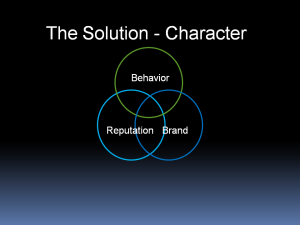
With the help of the following articles, this article offers some tips to improve team member behavior in the workplace: Do Your Company’s Incentives Reward Bad Behavior? , End Abusive Behavior on Your Team, and To Change Employee or Customer Behavior, Start Small .
By implementing a few strategies, you can improve behaviors that support trust, interdependence, genuineness, empathy, risk and success to enjoy greater team collaboration and success.
Review your system for rewards and punishments. According to Do Your Company’s Incentives Reward Bad Behavior? offering rewards for the behaviors you desire is the best way to entice your team members to try it your way. If you are noticing undesirable behaviors from your team members, it is time to review your system of rewards and punishments to ensure you aren’t inadvertently rewarding poor behavior. If this is the case for you, consider implementing the following tips:
- Create a list of the behaviors you desire from your employees, as well as the behaviors you want to discourage. Take an honest look at your organization’s goals to ensure these behaviors stay in line with those long-term goals.
- Identify the behaviors that you are measuring from your employees, and compare to your list of desired behaviors. If you do not measure some of these behaviors, your employees will likely view them as unimportant.
- After you have compared your first two lists, ensure your system for rewards and punishments is in line with your expectations to keep everyone on every level on the same page.
End the cycle of abuse. According to End Abusive Behavior on Your Team, a recent study by Pedro Neves published in the Journal of Occupational and Organizational Psychology found that managers tend to abuse those who are least likely to defend themselves. This is troubling for everyone involved, and it leads to decreased productivity and effectiveness across the board. To end the cycle of abuse, everyone involved, including witnesses, have different behaviors they can implement:
1. If you are the manager in this scenario, the first step is to identify your poor behavior. Look at the way you interact with your team members and recognize if there is one person on your team who consistently becomes the target of your frustration. If this is the case, take the next step to identify your triggers and learn to use alternative outlets to resolve your frustrations.
2. If you are the victim in this scenario, you have to stand up for yourself and fight for your rights as an employee. Professionalism is key here, so keep your cool and address your manager’s outbursts by pointing out the ways you have met expectations and calmly discussing ways to rectify altercations.
3. If you are the witness to this behavior, your silence will cause more harm than good. Again, professionalism is essential. Stand up for the abused employees by pointing out the good things they offer the team, and offer your support if you feel they can improve their performance.
Take baby steps when implementing change. According to To Change Employee or Customer Behavior, Start Small, research shows that employees do not respond well when they are told what to do. While team members need to understand their expectations and job requirements, employees are more productive and innovative when they are given all of the information and allowed to make their own decisions. To change employee behavior within your organization, express the benefits of the behaviors you wish to see, but give your employees the opportunity to make their own decisions. You might be surprised at how many people will fall in line with your desired behaviors.
While you cannot control every aspect of team member behaviors in the workplace, there are many strategies that you can implement to change and improve their behaviors. With the above strategies in place, you can reap the rewards of your desired behaviors, while still giving employees the opportunity to make their own decisions.
Copyright TIGERS Success Series Inc, by Dianne Crampton
About TIGERS Success Series, Inc
TIGERS is a Bend, Oregon team building consultancy that licenses and trains HR Executives and Management Consultants to use powerful team development tools that help to transform organizations into the type of workplaces employees enjoy returning to after a couple of days off. Join us in the 6 Principles that Build High Performance Teams leadership clinic to learn how to correctly develop new teams for complex organizational problem solving and change initiatives. Learn the steps required to transform low performing teams into excellent ones. Click here for the 2014 West Coast and 2015 East Coast clinic schedule.
